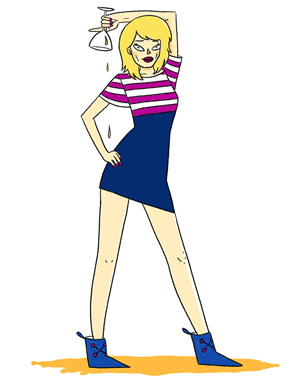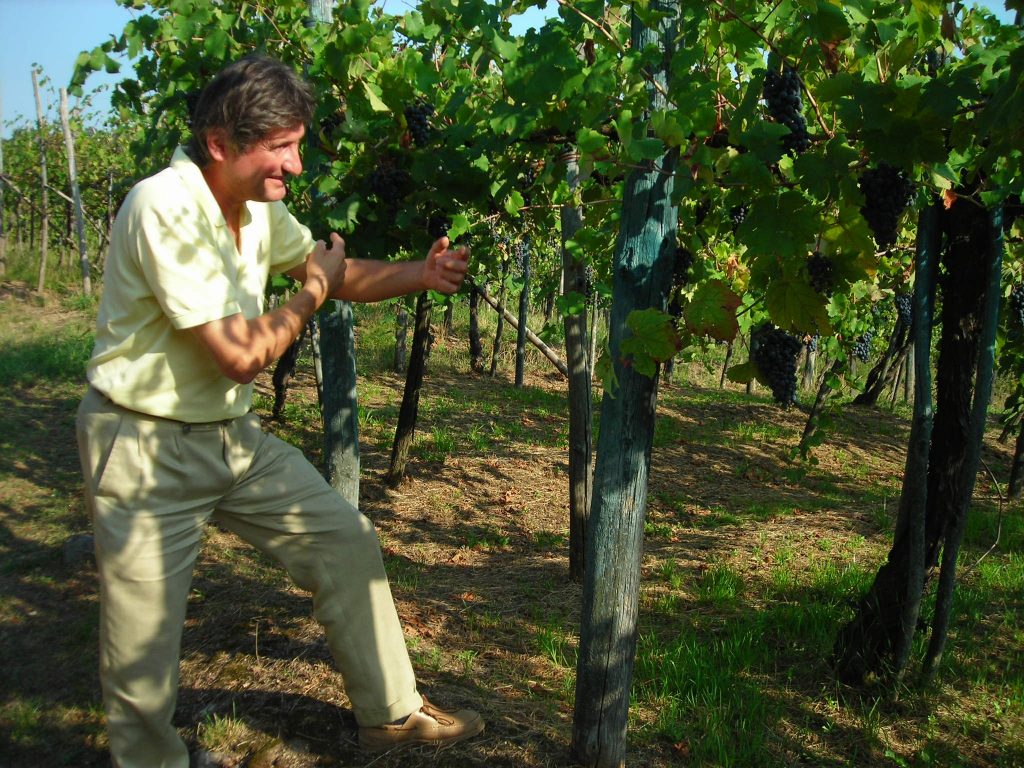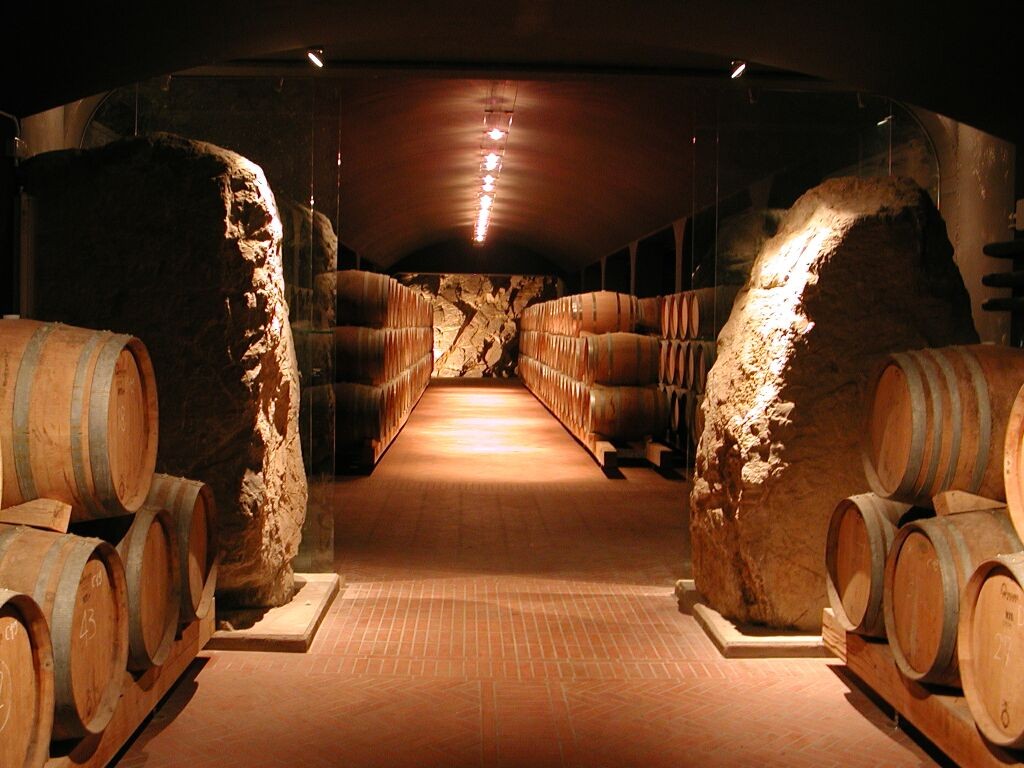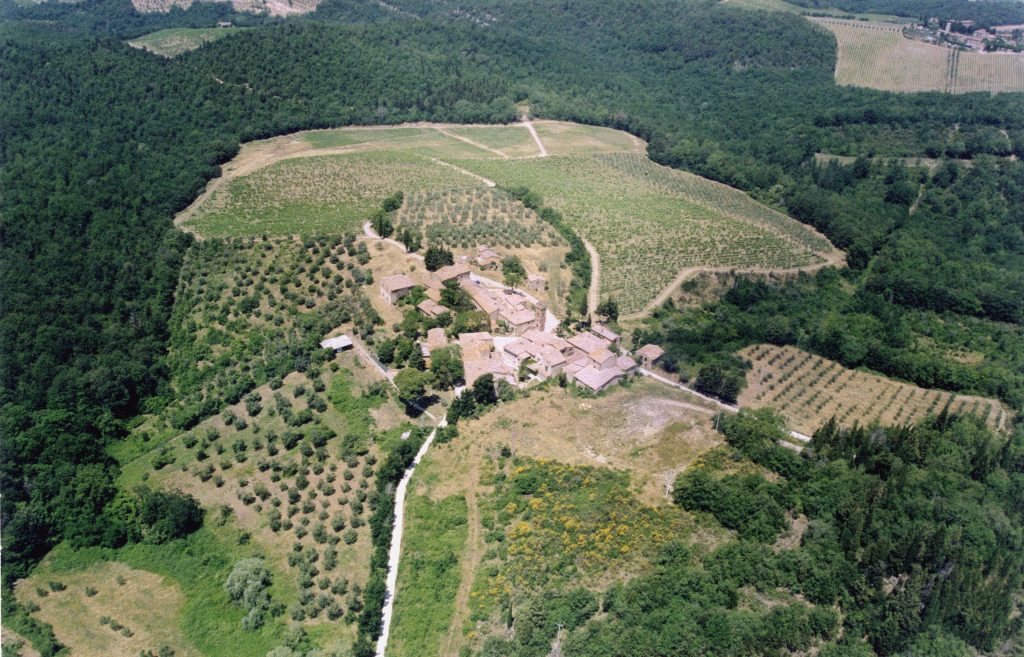
“It was hard to declare Cepparello as a table wine,” my father was appalled, but it was 100% Sangiovese so we had no choice and in fact it saved the estate,” says Paolo de Marchi.
Paolo de Marchi is referring to the ‘bad old days’ when it was mandatory to include white grapes (Trebbiano and Malvasia) in Chianti. Today the estate of Isole e Olena is a byword for quality in Classico region and Cepparello is one of best know and loved of its wines, but Paolo describes his start in Chianti as ‘a real adventure.’
Back in the 1960s, when the estate was founded by his father, the regional economy in Chianti was based on share cropping, but things were changing fast. “Chianti experienced a social earthquake,” says Paolo de Marchi. Within five years at the estate, 130 people, working the land to feed their families, and keeping half of the crop, diminished to forty employees earning a wage. “It was a turbulent time.”
In the midst of this, the appellation regulations were drawn up. The intention was to improve the quality of the wine and prosperity of the Chianti region, starting with “Chianti Classico’ as the sub-region with the worst problems. Sadly the new wine legislation enshrined some poor practices, including the mandatory use of white wine in red. Added to which many vineyards were planted with inferior clones of Sangiovese.
“It was a difficult time, but one of great possibilities.. and the door was open to in-comers,” remarks Paolo de Marchi who made his first vintage 1976. He describes his efforts as “lemonade in a sandpaper glass,” which certainly does not sound like a success. “It was all acid and tannin. These are the fingerprint of Sangiovese, but they should not hurt your palate!” It was a first attempt and it had rained through the season, but there was also the pesky inclusion of white wine and the fundamental issue of poor clonal material.
So to kick off, Paolo de Marchi picked the white vines separately and sold off the fruit. In 1987 he grafted some Chardonnay onto Malvasia vines planted in the best vineyard locations for white production including a five hectare vintage at 400m on limestone and marl soil. This became the first wine in his “Collezione Privata” A collection which includes a Syrah and a Cabernet Sauvignon.
The parcels where Chardonnay thrives are the cooler spots. The vineyards receive the sun late in the day or loose it early, and as such these sites are unsuitable for ripening Sangiovese. (As a brief aside on climate change, Paolo strongly believes that combating climate change will not be achieved by opting for cooler sites, but rather by selecting later ripening clones.)
The Chardonnay is fermented in small barrels, one third new, where it remains on lees for a year. “A Chardonnay for Chianti Classico is now historic,” comments Paolo de Marchi. “There is very little Italian white wine from older vintages. It has a unique story here.”
In his second year Paolo de Marchi began a lengthy project to address the problem of clonal material with regard to Sangiovese. He began identifying the best vines, walking up and down the rows, tagging those that performed best, and over the years some vines had a plethora of tags, giving him a growing understand of the variety and the vineyards.
These ‘super’ vines were used to create the highest expression of Chianti at the estate – Cepparello.
At the time the famous names in southern Tuscany were busy perfecting their ‘Super Tuscan’ blends; a fashion for blending Sangiovese with non-native varieties which was most often aged in French barrique. This had become popular from the mid Seventies after Tignanello whipped up a storm of interest.
Paolo di Marchi comments on blending, “It was not our vision, which was to make the best Sangiovese.” Albeit he has made a blend of his own, for he swiftly admits, “When we took out our best Sangiovese for Cepparello, it weakened our Chianti Classico, so we decided to ‘complete’ it with some Syrah. Syrah is earlier ripening and can bring more ‘ripeness’ as well as colour.” This was possible by a change in the regulation in 1984 when Chianti Classico DOCG permitted 10% non-native grapes in the blend.
So the first Syrah was grafted onto Canaiolo vines in 1984 and was included in Isole e Olena’s Chianti Classico together with a little Canaiolo, both helping to boost the main component which is of course Sangiovese. Subsequently Paolo planted a two hectare, high density vineyard of Syrah and began producing a single varietal Syrah.
This was breaking new ground. Isole e Olena was the first estate in Itlay to produce a pure Syrah wine. Paolo de Marchi labelled it ‘Hermitage’ in a bid to draw attention and it worked. “I was stealing a name, but I was invited to show it at a big tasting in Hermitage and came 8th or 9th of 800 wines.” The second year the Syrah joined the “Collezione” and was labelled as Syrah.
And then there was Cabernet. In the Eighties, a powerful lobby pressing for Bordeaux varieties to be included in the appellation emerged, and Paolo de Marchi felt he should become familiar with the varieties. If I understand correctly he made a Cab Sav, Cab Franc and Merlot blend, but the wine that made the Collezione is 95% Cabernet Sauvignon with soupçon of Cab Franc and Petit Verdot. What’s it like? Well Paolo says, “Cabernet Sauvignon here is not the the Tuscan coast which is more like Bordeaux.” From my tasting of the Cabernet, I think he might mean it is more subtle.
Not a man to stand still without a project, Paolo de Marchi has plans for Canaiolo. “It would be a pity if this unique variety died out. Caniaolo is a little spicy and has aromatics. It can be difficult. It has big clusters and loose bunches. They are easy to hang and are traditionally eaten at Christmas. Very little work has been done on Canaiolo.” He has selected vines which have berries “that look like blueberries”. In two years he will produce a Canaiolo which will join the Collezione Privata. “Canaiolo is very specific, while Sangiovese is everywhere.”
But, Sangiovese is the core variety in Chianti and work, from the mid Eighties, has continued across the estate (and the region) on upgrading the vineyards. Many vines which are now 15 years old have been ripped out and re-planted using superior clonal material. The vines are planted in higher density and I gather that Paolo de Marchi prefers to plants rows across the contour rather than up and down the hill, to help prevent erosion. In Chianti it is most unfortunate that a vine virus (Esca) has infiltrated the vineyards, as it has in so many regions, and consequently the estate aspects to lose around one third of the new plantings. Hence their 7,000 density plantings will become 5,000 in time.
Going back to those multi-tagged Sangiovese vines, Paolo took cuttings and planted them in one place to monitor how they performed on a level playing field. Subsequently the best were used to replant the estate.
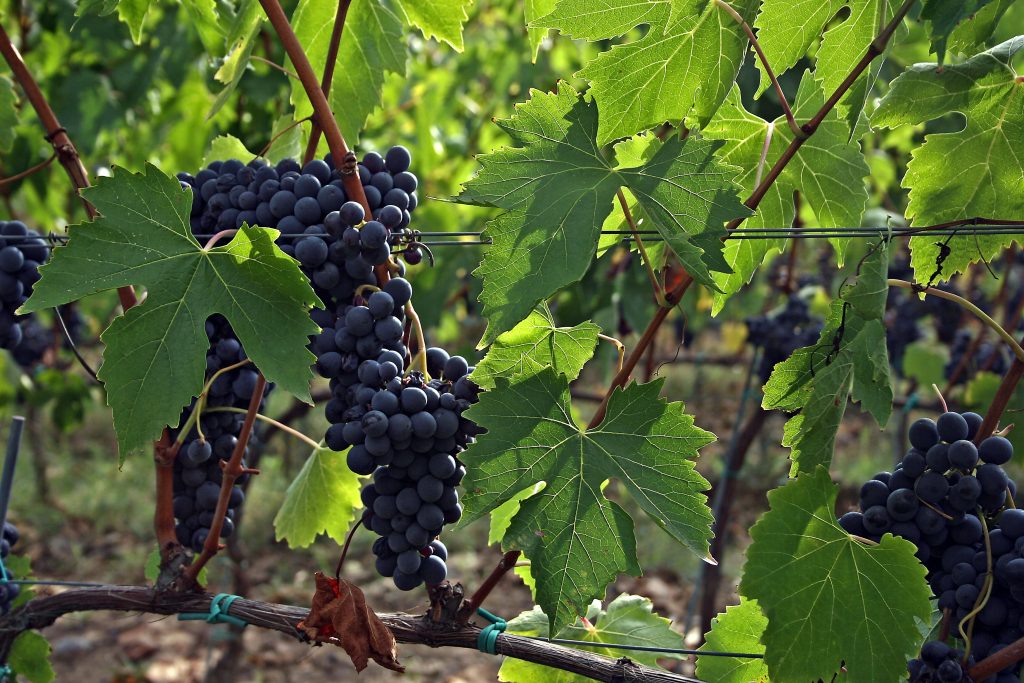
Cepparello is made from the best sites – sunny south/west slopes at 400-480m on largely galestro, a schistous clay. The vines are 12-54 years old. This is the flagship of the estate. In 2005 it became permissible to make Chianti Classico with 100% Sangiovese but he prefers to hang on to the IGT label. The current vintage is 2018, which I tasted for this blog.
2018 was a challenging vintage. Rain in spring with a very hot summer and rain at the end of August and into September. Rain and Sangiovese don’t really get on. Harvest was largely in September and Paolo comments “I like to harvest in October. After the 21st September the nights are longer then the day, so the light from the sun takes longer to reach its height. You are able to have a longer hang time. 2018 may have a little dilution but it is light and bright. It is high in alcohol, but you can’t do much about that. I think it is well balanced.”
Actually it’s a hefty 15%. “It is difficult to go against nature, when you want to go with it!” Paolo de Marchi points out that you can’t pick Sangiovese early – “the evolution of acidity and tannin is not at the same pace as the manufacture of sugar.” When he tried topping the vines, the sugar levels dropped, but the malic acidity increased and tannins were green. He has found it more effective to pull off the lateral leaves just before they reach full size. These leaves are powerhouses of photosynthesis, which is fine when the sugar is going into foliage growth, but after they are fully grown the energy is used to ripen the berries. Time for them to go. However this leaf plucking is a lot of work. It is only used in some vineyards, while he develops a practical system to carry it out throughout the estate.
And lastly we tried the Selezione. Paolo had hoped that this new appellation – the cherry on the cake for Chianti – would be used to incorporate the ‘Super Tuscans’ into the appellation fold. It didn’t happen and he feels the authorities have missed an opportunity to include all the best wines made in the region. In the event, the rather draconian rules stipulate 100% Sangiovese from a single vineyard or 90% Sangiovese with 10% of local grapes. The 2015 vintage is Paolo’s forth vintage of Selezione and it includes 8% Petit Verdot.
The range of wine from Isole e Olena estate is not truly traditional, but nor is it ‘Super Tuscan’. Paolo de Marchi has brought together elements of both approaches in his own style of ‘Super-Duper Chianti’.
Isole e Olena ‘Collezione Privata, Chardonnay 2019
Light citrus aroma, so the rich butteriness and glossy roundness of the palate comes as a surprise. It is richly savoury rather than fruity and has light nutty and biscuit note and a touch of bitter fennel on the finish. There is certainly good freshness and good ‘drive’ on the finish, despite the warm summer and early harvest. This is showy and quite impressive. Score 17.75. From 2022-30+
14%. £59
Isole e Olena ‘Collezione Privata, Syrah 2017
Blackberry fruit and up-toned spicy aroma. Very sweet on the strike, almost jammy. It’s richly textured; a thick suede swath. Voluptuous mid palate with a saturated quality to the fruit. Very moreish and I like the contrast, which comes through on the finish, of something more piquant – black chocolate a fresh and energetic bite. This is a full-on, hedonistic wine. Score 18. From 2023-35
14.5%. Twenty-Five percent new French and American oak here. £62.99
Isole e Olena ‘Collezione Privata, Cabernet Sauvignon 2016
A somewhat dusty aroma. A rich and seductive Cabernet on the strike; there is sweetness of blackcurrant fruit in middle palate with good depth and density. The glycerol and elevated alcohol are quite apparent. Richly ripe and velvet tannins. It is lighter, fresher and more energetic on the finish. I like the tanginess at the end which is accompanied by appetisingly fresh and herbal aromatics. Score 17.75. From 2025-35
14.5% £84.99.
Isole e Olena ‘Chianti Classico’ 2018
Lightly herbal aroma with touch of cherry pastille. On the palate, light-bodied, bright and quite breezy with a slightly grassy character. Lightly grained tannins. It is fresh and quite self-effacing and very accessible. A nicely balanced, floaty and quite delicate wine for near term drinking. You might expect it to be overpowered by the level of alcohol, but actually it carries it off. Score 16.5. From 2021-25
14.5% £27.99
Isole e Olena, Cepparello, 2018
Spicy marzipan aroma. This glides into the palate. Gorgeous texture. Satin smooth and rippling. It’s straight and elegant. Just beautifully woven. A lovely equilibrium. It purrs. The persistent finish is sleek and feline. This is in a different league to all the wines which have gone before, so much more subtle, and I am quite amazed that it carries off the high alcohol with ease. My sort of wine and by far my favourite. Score 18.5. From 2024-35
I5% £99.99
Isole e Olena Gran Selezione 2015
Touch of evolution on the aroma with a hint of forrest floor. Very intense on the strike. Multi layered and compact. It is seriously battened down. There is liquorice density and power, but bunched. Needs time to unfold and certainly a wine which will develop over many years. The finish is very aromatic. Score 18.75. From 2025-40+
14.5% £279

